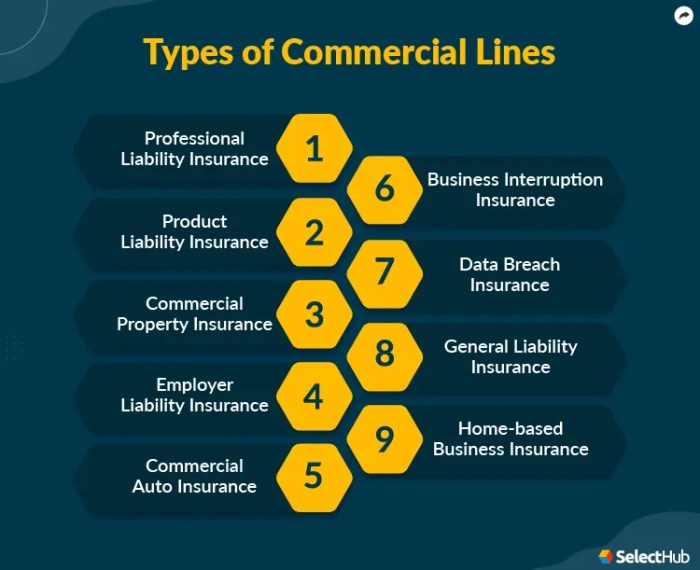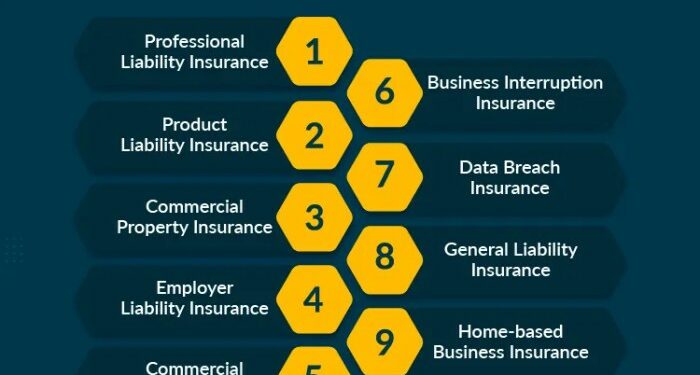Exploring the landscape of Business Insurance in 2025, this introduction sets the stage for a forward-thinking discussion on the evolution of insurance practices towards a digital-first approach.
Providing insights into the challenges faced by traditional insurance models and the transformative power of digital tools, this overview aims to captivate readers from the outset.
Challenges in Traditional Business Insurance

Traditional business insurance models face several limitations that hinder their effectiveness in today's fast-paced digital world. One of the main challenges is the reliance on manual processes for insurance coverage, which can lead to inefficiencies and delays in providing timely protection to businesses.
Additionally, outdated insurance practices pose risks that may result in inadequate coverage or gaps in protection for businesses.
Limitations of Traditional Business Insurance Models
Traditional business insurance models are often based on standardized policies that may not fully address the unique needs and risks of individual businesses. This one-size-fits-all approach can leave businesses vulnerable to unexpected challenges or losses that are not adequately covered by their insurance policies.
Moreover, the lack of flexibility in traditional insurance models can make it difficult for businesses to adapt to changing circumstances or emerging risks.
Inefficiencies in Manual Processes for Insurance Coverage
Manual processes for insurance coverage, such as paperwork, phone calls, and in-person meetings, can be time-consuming and error-prone. This can lead to delays in processing insurance claims, providing quotes, or making policy updates, which can impact the overall efficiency of the insurance process.
In a digital-first world, where speed and convenience are paramount, the reliance on manual processes can put traditional insurers at a disadvantage compared to more tech-savvy competitors.
Risks Associated with Outdated Insurance Practices
Outdated insurance practices, such as using legacy systems or outdated risk assessment models, can expose businesses to risks that are not accurately reflected in their insurance coverage. This can result in underinsurance, where businesses do not have adequate coverage for potential losses, or gaps in coverage that leave them vulnerable to financial liabilities.
In a rapidly changing business environment, where new risks and challenges emerge constantly, relying on outdated insurance practices can leave businesses unprotected and ill-prepared for the future.
Transition to Digital-First Coverage
Transitioning to digital-first coverage in the insurance industry involves leveraging technology to streamline processes, enhance customer experience, and improve efficiency.
Digital Tools Enhancing Insurance Processes
Digital tools such as artificial intelligence, blockchain, and data analytics can revolutionize insurance processes by automating underwriting, claims processing, and risk assessment. For example, AI algorithms can quickly analyze vast amounts of data to determine risk levels and personalize insurance offerings for customers.
Comparison of Traditional vs. Digital-First Approaches
- Digital-first approaches offer real-time access to policy information, quicker claims processing, and personalized customer interactions through chatbots and mobile apps, enhancing overall customer experience.
- Traditional insurance processes often involve manual paperwork, longer turnaround times for claims, and limited customer engagement options, leading to a less efficient and sometimes frustrating experience for policyholders.
- By embracing digital tools, insurance companies can reduce operational costs, improve accuracy in risk assessment, and provide proactive risk management solutions to clients, setting them apart from traditional insurers.
Technology Trends Shaping Business Insurance
In the rapidly evolving landscape of business insurance, technology plays a pivotal role in transforming traditional practices and enhancing efficiency. Let's delve into the key technology trends shaping the future of business insurance.
AI and Machine Learning in Insurance Underwriting
AI and machine learning have revolutionized insurance underwriting by enabling insurers to analyze massive amounts of data to assess risk more accurately and efficiently. These technologies can identify patterns and trends that human underwriters may overlook, leading to more precise risk assessment and personalized coverage options for businesses.
By automating underwriting processes, AI and machine learning streamline operations, reduce costs, and enhance the overall customer experience
Impact of Blockchain Technology on Insurance Transactions and Security
Blockchain technology has the potential to transform insurance transactions by providing a secure, transparent, and decentralized platform for conducting business. Through blockchain, insurers can create smart contracts that automatically execute terms and conditions when predefined criteria are met, enhancing the speed and accuracy of claims processing.
Additionally, the immutable nature of blockchain ensures data integrity and reduces the risk of fraud, ultimately boosting trust between insurers and policyholders.
Use of IoT Devices for Real-Time Risk Assessment and Mitigation
The Internet of Things (IoT) devices are increasingly being utilized in business insurance for real-time risk assessment and mitigation. These devices collect data on various aspects of a business's operations, such as equipment performance, environmental conditions, and employee behavior, allowing insurers to proactively identify potential risks and prevent losses.
By leveraging IoT technology, insurers can offer dynamic pricing based on real-time data, incentivizing businesses to adopt risk-reducing measures and improve their overall risk profile.
Customer-Centric Insurance Solutions
In today's rapidly evolving business landscape, customer-centric insurance solutions are essential to meet the diverse and changing needs of modern businesses. By designing personalized digital insurance offerings, companies can significantly enhance customer satisfaction and loyalty.
Designing Tailored Insurance Products
- Utilize customer data to understand specific business requirements and risks.
- Create customized insurance packages that address individual needs and preferences.
- Offer flexible coverage options that can be easily adjusted as business circumstances change.
Improving Customer Satisfaction
- Provide intuitive digital platforms for seamless policy management and claims processing.
- Offer proactive risk management tools and resources to help businesses mitigate potential threats.
- Deliver personalized recommendations and insights to help businesses make informed decisions.
Leveraging Customer Data
- Utilize advanced analytics to analyze customer behavior and identify trends.
- Segment customers based on risk profiles and preferences to offer targeted insurance solutions.
- Implement feedback mechanisms to gather insights and continuously improve insurance offerings.
Last Recap
In conclusion, the future of Business Insurance in 2025 is poised to embrace a digital-first mindset, revolutionizing the industry with customer-centric solutions and cutting-edge technology. This summary encapsulates the key takeaways and possibilities that lie ahead in the realm of insurance.
Clarifying Questions
What are some limitations of traditional business insurance models?
Traditional business insurance models often struggle with adapting to modern risks and may lack flexibility in coverage options.
How does AI impact insurance underwriting in the business sector?
AI plays a crucial role in streamlining underwriting processes by analyzing data more efficiently and accurately, leading to better risk assessment.
What are some strategies for creating personalized digital insurance offerings?
Utilizing customer data insights can help tailor insurance products to individual needs, enhancing customer satisfaction and retention.






